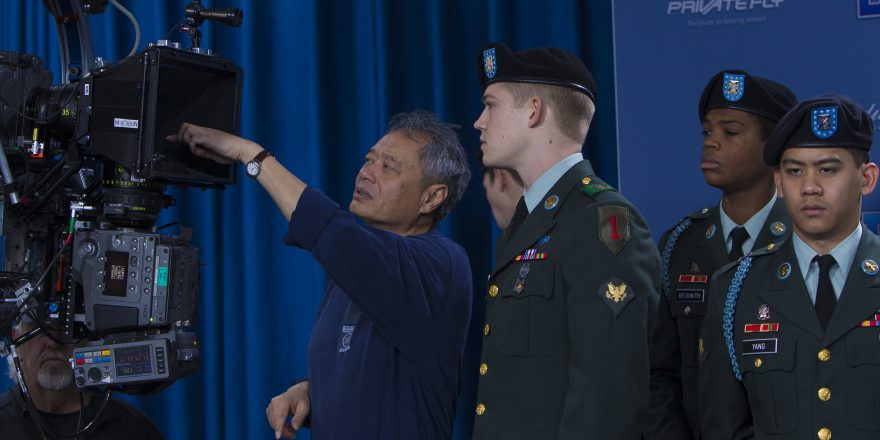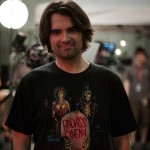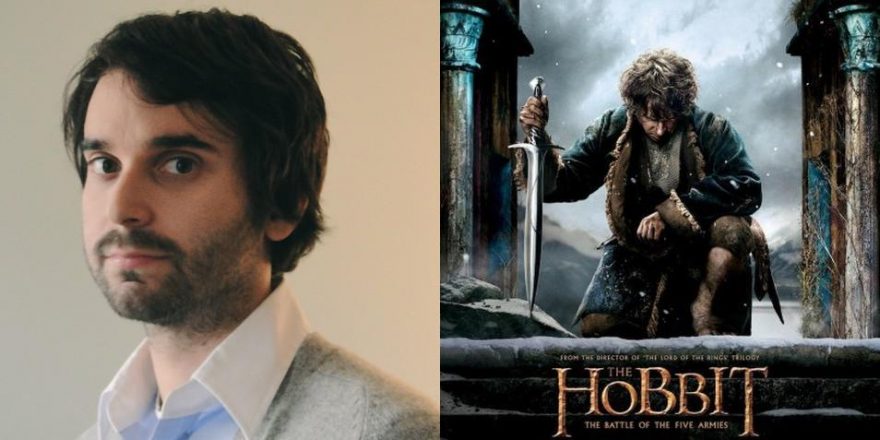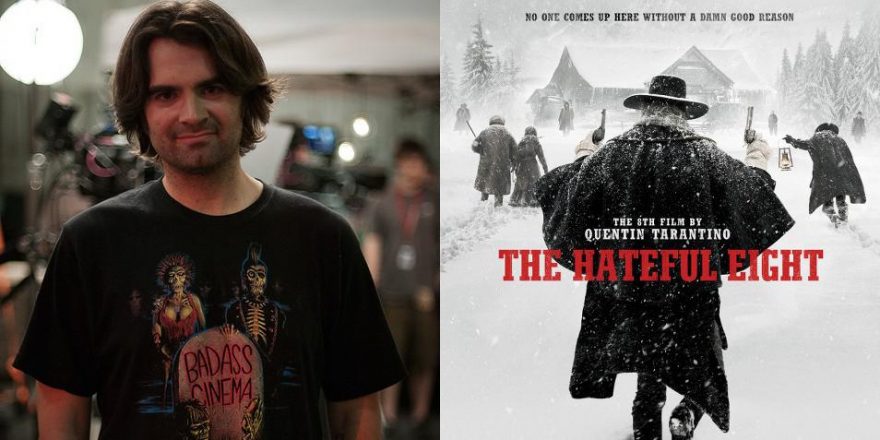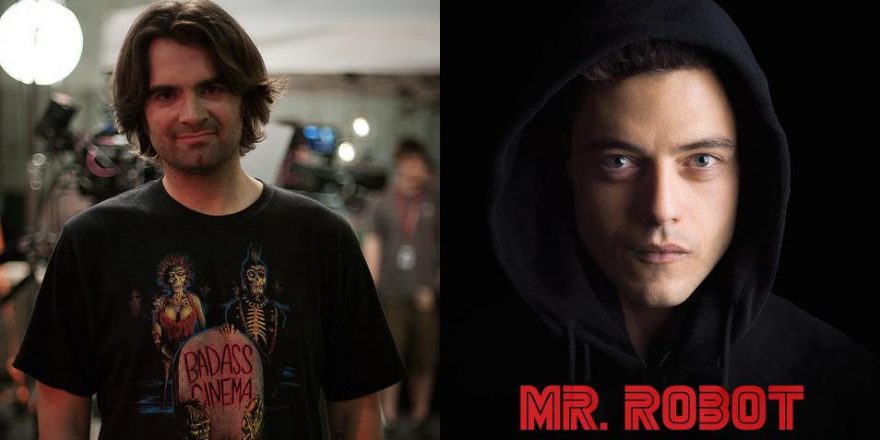For more than 100 years, the human eye has been able to differentiate between the look of real life and that of “cinema” – the flicker of the celluloid flapping through a projector at 24 frames per second, creating motion out of images in a way that feels uniquely different than our real world. By having this differentiation between the ocular definition of the naked eye and what is captured in a movie camera, storytellers and filmmakers have been able to fool us, manipulate us, elevate us and take us away to another world.
Now, though, technology is challenging the older model and possibly changing the language our eyes have been accustomed to, for better or worse. As filmmakers strive to advance the storytelling norms of the day, a gimmick of sort some have started to utilize is High Frame Rate (HFR). You’ll find better definitions of the format elsewhere online (like here), but essentially the movie is filmed in a higher frame rate than 24 frames per second, which is standard for most/all movies and features, a slight motion blur in the action that is synonymous with cinema. TV news, reality shows and live events on television are shot and broadcast usually in 60 fps, which is much sharper. (Whenever I see 60 fps, my brain immediately tries to put the content in a bucket: Is it news? The Voice? Is it a live event? Is there sports involved? etc.) But who is to say that movies cannot use this technique and frame rate? TV has adapted and has been trying to replicate the feel of cinema for years … and, in many eyes, is winning.
When Peter Jackson’s Hobbit franchise was shot and presented in a higher frame rate (48 fps), most critics and audiences rejected the HFR look in favor of the 24 fps version that was visually more like the original Rings trilogy. When I saw The Hobbit: An Unexpected Journey opening night in 48 fps, it felt like my eyes too had rejected the format. It was hard to get involved with the story, the characters and the locations – everything looked too clean and “present.” It was cool to look at the screen and almost assume Bilbo and the gang were right there (especially in 3D), but it felt like the actors were there, in a strange form of digital rehearsal being Skyped into the theater. It looked too real, which in turn made it completely unreal.
Like Jackson, Ang Lee has always been considered a trailblazing filmmaker. He’s interested in stories about people, but never settles on one genre, having made everything from a period familial drama (The Ice Storm) to a high-flying martial arts fantasy (Crouching Tiger, Hidden Dragon), a superhero movie (Hulk) to an intimate yet sweeping character study shot in 3D (Life of Pi). Lee is never one to brush off a new challenge, so it was exciting when he announced his new film, Billy Lynn’s Long Halftime Walk, was going to use 4K 3D cameras that shoot 120 fps – almost triple the frame rate of The Hobbit!
When the first reviews for Billy Lynn hit, most critics seemed quite critical of the 120 fps technique. “Distracting” or “fake,” they said, which didn’t bode well for my own eyes. These were many of the same issues audiences had with The Hobbit, but while those criticisms seemed partly due to Jackson deviating from a previously established visual language, Billy Lynn was an original story that didn’t have major VFX as a crutch or a need to suspend disbelief.
The film is the story of a soldier, the titular Billy (Joe Alwyn), a baby-faced American who travels home with his “Bravo Team” platoon as they are being celebrated at a halftime show during a Thanksgiving Day football game early in the Iraq War, complete with Destiny’s Child performance (which becomes the film’s McGuffin of sorts as we never quite see Queen Bey’s face … clever play, Ang) to date the scenario. Intercut with the scenes around the halftime show are flashbacks to Billy’s interactions with his family (Kristen Stewart has a short but effective role as his sister) and his time training and in Iraq, where we are shown sporadic recollections of the violent event Billy was involved in that made him a hero. It’s a simple, intimate story with a hell of a backdrop; between the stark, sun-baked visuals of the war zone to the wide, candy-colored hues of the football stadium practically overflowing with red, white and blue, you can understand why Lee would want to use the HFR cameras. To engulf the audience in the terror of modern war with unflinching clarity, juxtaposed with the TV-like resolution recreating an event most people see in a high frame rate anyway. All of these scenes completely benefited from the 120 fps presentation, though they likely make up only about 30 to 40 percent of the story, the rest being just people talking, interacting, living. But did the HFR help or hurt these other scenes?
As the film unspooled in the Cinerama Dome, one of the few theaters in America playing the film in 4K 3D 120 fps – exactly how Lee intended it – it did take me a few minutes to adjust my eyes to the images. The first image, in which a sleeping Billy reaches for his cell phone in the foreground of the frame, was a very simple shot, but with the higher frames, the film actually looked real. Like I could pick up that phone and let Billy sleep a little longer. It was the perfect shot to introduce our eyes to the format; not a sweeping vista to take in how much intimation the screen could hold, but rather a quiet moment we all know from our own lives, at our own high-frame-rate reality.
When Billy meets up with the rest of Bravo Team outside the hotel as they’re about to be picked up, Billy’s interaction with his troop-mates in the open exterior is strange. Something felt both too real and not real enough in equal measures. I was being presented a scene I would normally view in 24 fps with the usual camera tricks (Steadicam pull back to reveal the master of everyone, coverage on each guy, complete with pans, tilts and dolly techniques) but because of the 120 frames, everything looked very theatrical because they looked right there. It felt like they were actually in the Dome. Seeing actors like Chris Tucker, Garrett Hedlund and later Vin Diesel (three actors who are normally associated with 24 fps productions) felt out of place, too vibrant and “there” for me to fall into the story. It was as if the high frame rate was distracting me because I associated the format with another medium. It was like two different people telling me the story at the same time. They were close to being in sync, just not quite there, making more of a fractured harmony with images instead of sound.
But then … I forgot about it, like my eyes adjusting to a pitch-black room. The film is a non-linear story with flashbacks, the smaller intimate scenes intercut with bigger set pieces like the Iraq scenes or the halftime show, and the war scenes made you feel like you were actually there, especially during long takes, which gave the impression of a hyper-real world, emphasis on real.
The halftime scenes in the stadium had a similar effect as the action unfolded. Bodies in motion, pyrotechnics, crowds enveloping the action; viewers have been enjoying this on their TV every Sunday for decades. The format felt appropriate because our eyes were somewhat used to this technique in this particular setting. While I’m sure they’ve never seen footage this close to the action (along with the backstage shenanigans and behind-the-scenes drama that goes into these lavish productions), these scenes popped with an immediacy that pulled me closer in, even empathizing with characters I wasn’t connecting with before. I felt like I was right on stage with those guys, feeling every emotion.
Where the HFR didn’t work for me was most of the scenes around these set pieces – at home with Billy’s family or his sister, or in the limo with the guys on the way to and from the stadium. And I believe it’s not directly related to the high frame rate but rather the fact that Lee is still presenting these smaller scenes the way he would if it was a normal film camera. Cinema is language, and things like shooting a master shot and then going in for coverage (close-ups, medium shots, insert close-up shots, etc.) just didn’t translate using the 120 fps. Something as simple as a whip pan felt too abrupt or jarring; a dolly into a character after conventional coverage felt unnatural and staged. It wasn’t distracting enough to leave the theater, but there was a disconnect that made me more aware of the movie in these scenes than the ones where explosions were going off.
But Joe, did you like the movie?!
As the answer is related to how it was presented visually, I’m conflicted. When I was walking out of the theater, I felt like I had seen something fresh and new, but at the same time, nothing other than the war scenes and the halftime sequences really benefited from the ambitious presentation. I couldn’t really tell you anything about the script or characters that moved me, but I could recall how certain scenes engrossed me due to the format. If anything, the smaller, dramatic moments being filmed with more conventional shooting techniques were what held the film back from full immersion.
So was it the subject matter that held the technique back, then? It’s essential that filmmakers always think about how to present their story in a visual form. Would widescreen 35mm be the right format to present your intimate, personal drama set in an ice-cream shop between two people? Would an iPhone be the right way to shoot a dystopian sci-fi epic? It’s a very important question to ask, and one that the filmmakers need to challenge with every scene in the story. Sure, certain scenes might really kick ass in 3D, but is it effective throughout? In Billy Lynn, the use of 120 fps benefited some scenes, but held back the drama of others.
If this weren’t the first film using this technique, I’m sure it would be less jarring. If I had seen the film in 24 fps – which will be how most people will see it when it’s released over the next few weeks – maybe the drama in the smaller scenes would have been been more effective (or less distracting), but then would the halftime and Iraq scenes have felt stunted, muted? One interesting approach would have been to follow the example of Trumbull’s Brainstorm – which effectively combined 70mm with a 2.35:1 ratio and 35mm with a 1.85:1 ratio, respectively, for its sci-fi and “real” segments – and use the 120 fps only for just the war flashbacks and halftime scenes. That might have been a better way to ease the audience into the technique, making the 120 fps more of a storytelling device, giving it more weight and impact.
It’s exciting to think what other genres could benefit from the multitudes of extra frames. Imagine what Luc Besson could do with a sci-fi epic like Valerian or The Fifth Element, where we expect the world to be more vibrant? Or if Danny Boyle gave us a more “real” version of 127 Hours or Slumdog Millionaire, immediate stories presented by a filmmaker unafraid of breaking conventions of how a scene is shot? Or hell, give Peter Jackson another shot at making that down-and-dirty horror movie he’s been teasing us with and make the blood flow in this new, vibrant way? In the right hands, with the right story, 120 fps could be where cinema is headed – we just need the right films to ease us into it.
Ultimately, Billy Lynn’s Long Halftime Walk is an admirable, ambitious step forward that got me excited as a storyteller at the possibilities of 120 fps. Once a filmmaker crafts a tale that will best take advantage of the clarity and hyper-resolution of 120 fps, I think the floodgates will be opened for this exciting new way of presenting movies. We just have to open our eyes a little wider.



